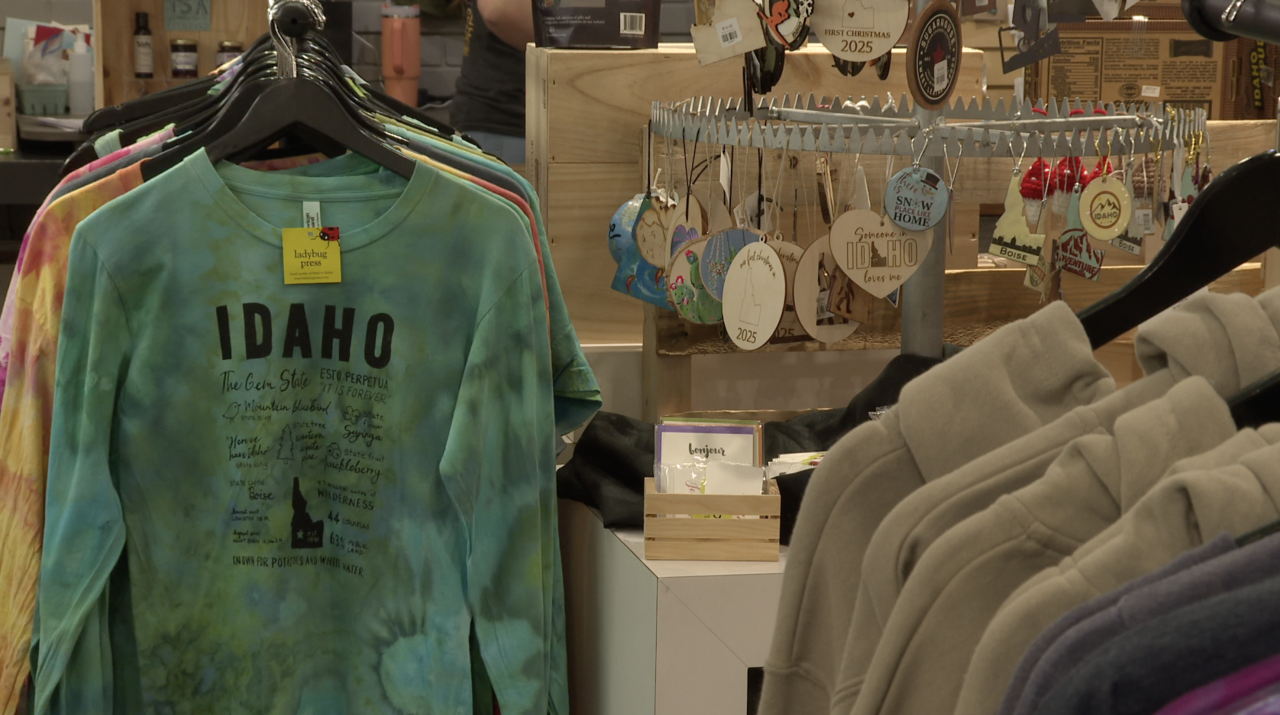Idaho
Idaho State Board of Education to consider extension in U of I-Phoenix negotiations • Idaho Capital Sun

This story was originally posted on IdahoEdNews.org on June 26, 2024.
The University of Idaho and the University of Phoenix want more time to talk about a deal.
And the State Board of Education will meet Friday morning to discuss an extension — which could immediately net the U of I $5 million.
If the State Board signs on, the parties would have until June 10, 2025, to reach a deal that would move the for-profit online giant under the U of I’s ownership. The State Board first endorsed the $685 million purchase in May 2023. The deal has been mired in political and legal limbo for months. However, the U of I and Phoenix have continued to negotiate past an initial, nonbinding May 31 deadline.
“The extension will allow the (U of I) time to incorporate feedback from legislators and other Idaho stakeholders into the transaction and make amendments based on the feedback,” State Board staff said in a memo released late Wednesday afternoon. “There is no commitment to a closing at this time.”
The extension has been in the works for some time. Idaho Education News reported first on many of the basics in a May 28 article.
The State Board memo spells out the details:
- Phoenix and its owner, Apollo Global Management, would have a chance to negotiate with other would-be sellers, or pursue an initial public offering.
- The U of I would immediately receive $5 million for agreeing to an extension.
- The U of I could also receive additional “breakup” fees if the purchase falls through. If the June 2025 deadline comes and goes without a sale, the U of I would receive another $5 million. If Apollo finds another buyer or pursues an IPO, the breakup fees would total $15 million.
The fees to the U of I are designed to offset the university’s consulting and legal bills. As EdNews has previously reported, the U of I has spent some $11 million on due diligence as it has reviewed a Phoenix purchase; the bulk of those fees went to U of I President C. Scott Green’s former employer, Hogan Lovells, an international law firm.
In their memo, State Board staffers say the U of I remains bullish on a Phoenix purchase. The U of I says its Phoenix business model “remains intact and is growing stronger.” The U of I has maintained it could net $10 million or more in annual revenues from Phoenix operations.
The U of I also maintains that it can navigate some turbulent political waters — even after the state Senate voted down a bill in March designed to salvage the purchase.
“The parties … are committed to continue working collaboratively with legislators, through the 2025 legislative session if needed, to arrive at transaction acceptable to all.”
The board is scheduled to meet at 8:30 a.m. Friday.
Check Idaho Education News on Friday for coverage of the meeting. And click here for in-depth, exclusive Phoenix coverage from Idaho EdNews.
GET THE MORNING HEADLINES DELIVERED TO YOUR INBOX

Idaho
Idaho dance group preserves Mexican traditions through holiday Posada performances

NAMPA, Idaho — Families across Idaho celebrate traditions this season, and Ballet Folklorico Yareth de Idaho is bringing those stories to life with every step and every song, sharing the magic of a Posada with the community.
“Folklorico is very much our culture. It shows the whole story of Mexico,” said Marifer Avila, Ballet Folklorico Yareth de Idaho Instructor.
WATCH | What it takes to get students prepared + learn what a Posada is—
Idaho dance group preserves mexican posada traditions through folklorico
Walk into the Idaho Hispanic Community Center, and you’ll hear music bursting through the halls and see dancers from Ballet Folklorico Yareth de Idaho preparing for the most meaningful season in their culture.
“We as a group try our best to represent the most accurate when it comes to songs, steps, storytelling, vestuario; everything involved has a purpose, and from head to toe has to mean a purpose at all times,” Avila said.
Idaho News 6
With each step and every verse, they reveal what a posada truly is, full of life, color, and community. Their ballet folklorico performances don’t just celebrate the season; they help preserve rich traditions from regions across Mexico.
“It’s a big party traditionally in Mexico. It’s a Catholic holiday. It’s with a procession which is called birino posada— going to a door, getting rejected, going to another door, getting rejected again, and then finally having the host be like, ‘Fine, you can come in.’ And then there’s this party with piñatas and music and dancing and food and then prayers and a baby rocking,” Avila said.
For Avila, guiding her 30 students through every step and lyric isn’t just teaching — it’s ensuring each tradition is represented with heart and authenticity.
Idaho News 6

“They’ve learned that it’s a discipline, you know — wanting to go or not wanting to go, they’re here. You know, they’re learning that it’s a responsibility. It’s so beautiful that we can, as a group, represent that the best of our abilities on a stage where people can be entertained and understand our culture,” she said
Their holiday posada is sold out, and the group says plans are already in place to bring more dances to life in the new year.
Idaho News 6

For Canyon County happenings, news, and more— join our Facebook Group: 2C Neighborhood News – Nampa, Caldwell, Middleton
This story was initially reported by a journalist and has been, in part, converted to this platform with the assistance of AI. Our editorial team verifies all reporting on all platforms for fairness and accuracy.
Idaho
Handmade Idaho brings local artisans together under one roof at Boise Towne Square

BOISE, Idaho — What started as a holiday pop-up has transformed into a year-round celebration of Idaho creativity, bringing together the best local makers all in one convenient location.
Handmade Idaho, located at 350 N Milwaukee St Ste 1141 on the lower level of Boise Towne Square Mall, showcases goods from small artisans across the Gem State.
Handmade Idaho brings the best of local artisans to you.
Handmade Idaho brings local artisans together under one roof at Boise Towne Square
Owner Angela Stewart says the business grew out of a need to support local creators.
“We started as an organization to provide more opportunities for local artisans to sell their goods. So we had a holiday show for several years, and then COVID hit, and we had to cancel,” Stewart said.
After the pandemic forced cancellation of their holiday show, Stewart opened pop-up shops at The Village and later at Boise Towne Square Mall. The mall convinced her to return full-time, and she’s been operating there since 2022.
The permanent location allows customers to shop from local artisans seven days a week. Stewart accepts new makers through an online application at HandmadeIdaho.com.
“We still feature like local artisans from all over Idaho, but now, you know, people can shop them 7 days a week instead of just during the holidays,” Stewart said.
Inside the store, huckleberry items are particularly popular since it’s the state fruit.
Greenlee Clark / Idaho News 6
“We have everything Idaho huckleberry you can imagine, from soap to edible things, to tea towels,” Stewart said.
The store also features potato-themed products, including chips, soup mix, and bread mix, along with sweet treats, unique jewelry, apparel for all ages, hats, candles, glassware, and mugs. Some items are printed right in the shop, and apparel goes up to 3XL on many designs.
Greenlee Clark / Idaho News 6

The store’s most popular offering is custom and ready-to-go gift boxes available in three different sizes. Pre-made options include huckleberry-themed boxes, spud boxes, kitchen boxes, and spa boxes.
“You can pick all the goods you want, we’ll make it fit in a box, and we can ship it, or you can take it with you, but this is like a really ideal fun gift,” Stewart said.
For uncertain shoppers, Stewart offers guidance.
“If you’re buying a gift for somebody and you don’t know what they like, food is always a hit,” Stewart said.
About 90% of the inventory is available online, but the remaining 10% consists of one-of-a-kind items made by different artisans. The business also specializes in corporate gifting and helps customers with Secret Santa and white elephant gifts.
Greenlee Clark / Idaho News 6

“People come in here all the time. I don’t know what to get, and they just give us a budget, we’ll figure it out for you,” Stewart said.
Stewart, who also owns Ladybug Press and features those products in the store, emphasizes the community impact of supporting small businesses.
“When you shop our store, you’re helping your neighbors, you’re helping people in our actual community, and I think that, you know, that’s a really huge thing to be able to like vote with your dollars,” Stewart said.
Handmade Idaho is open seven days a week at 350 N Milwaukee St Ste 1141 on the lower level of Boise Towne Square Mall, with online shopping available at HandmadeIdaho.com.
Idaho
Charges dropped against BYU-Idaho student accused of kidnapping baby at Costco – East Idaho News

Bonneville County Prosecutor Randy Neal describes a new video from Costco over the incident involving an alleged kidnapping prior to Thanksgiving. | Daniel V. Ramirez, EastIdahoNews.com
IDAHO FALLS — Weeks after a BYU-Idaho student was accused of kidnapping a baby from Costco, the Bonneville County Prosecutor announced Thursday afternoon that charges will be dismissed.
During a news conference, Prosecutor Randy Neal showed three videos from inside Costco during the alleged incident on Nov. 24, which led to Michael Raine, 24, being charged with felony second-degree kidnapping.
According to court documents, Raine was looking at books inside the store and a cart with a baby was nearby.
RELATED | BYU-Idaho student accused of kidnapping 4-week-old baby in Costco
The document states that Raine “looked around” and then grabbed the cart and walked away.
The issue for officials was what occurred once Raine rounded the corner with the cart and the baby.
Neal said the new video shows Raine walking away with the cart, and the baby’s mother finding him almost immediately. The prosecutor explained that when pursuing cases, a prosecutor reviews the evidence and determines whether, beyond a reasonable doubt, the action was a crime.
“For a prosecutor, the analysis is whether there is a rational basis for someone to conclude, beyond a reasonable doubt, that they are to a moral certainty, that this is a crime? I don’t think that we can say that,” Neal said.
Neal said the surveillance videos from Costco show that Raine had no intention of running away with that cart.
WATCH COSTCO SURVEILLANCE VIDEO HERE:
The other aspect is that Raine didn’t leave the store after the incident, which, according to the documents, indicates the student had purchased items and eaten at the food court.
Looking at the reasons for Raine’s arrest, Idaho Falls Police Chief Bryce Johnson said at the time, there was only one single video, and based on what was seen, Raine’s actions were found to be suspicious.
Another factor that influenced Raine’s arrest was his trip to the United States Marine Corps Recruiting station in Boise on Nov. 25.
“The detectives were consulting with the prosecutors and made the proper decision at that time in the interest of public safety, based on probable cause, to make that arrest,” Johnson said. “That just doesn’t end the case. There’s a requirement to keep on going.”
Johnson and Neal discussed how detectives met with the mother of the baby and went over the events in a cognitive interview. Neal said this type of interview is a narrative recount of the events by the victim, without any questions being asked.
“Often, the mind will just start filling in pieces in order to make it make sense to them,” Neal said.
Detectives worked on recreating the incident at Costco with the mother, but Neal said some of the mother’s version of events were inaccurate in terms of the cart placement and other minor details.
Neal said Natalie Millett was told charges have been dropped.
In a statement to the media, Millett said the event has caused the emotional pain that words can’t describe and will impact her for life.
“I believe it was miraculous that I ran in the right direction and recovered my baby swiftly, but the outcome could have been so different had I not listened to my intuition and impressions that day,” Millett said.
After being informed that the charges against Raine would be dismissed, Millett stated that she does feel at peace because she has done everything in her power.
One of the major talking points of the conference and in Millett’s statement is the reaction and comments from social media that have attacked her and made egregious remarks about people involved.
“To sit in your basement and write poison is just really disgusting. It’s just inappropriate,” Neal said.
=htmlentities(get_the_title())?>%0D%0A%0D%0A=get_permalink()?>%0D%0A%0D%0A=htmlentities(‘For more stories like this one, be sure to visit https://www.eastidahonews.com/ for all of the latest news, community events and more.’)?>&subject=Check%20out%20this%20story%20from%20EastIdahoNews” class=”fa-stack jDialog”>
-

 Alaska6 days ago
Alaska6 days agoHowling Mat-Su winds leave thousands without power
-

 Texas7 days ago
Texas7 days agoTexas Tech football vs BYU live updates, start time, TV channel for Big 12 title
-
Ohio1 week ago
Who do the Ohio State Buckeyes hire as the next offensive coordinator?
-

 Washington4 days ago
Washington4 days agoLIVE UPDATES: Mudslide, road closures across Western Washington
-

 Iowa6 days ago
Iowa6 days agoMatt Campbell reportedly bringing longtime Iowa State staffer to Penn State as 1st hire
-

 Miami, FL6 days ago
Miami, FL6 days agoUrban Meyer, Brady Quinn get in heated exchange during Alabama, Notre Dame, Miami CFP discussion
-

 Cleveland, OH5 days ago
Cleveland, OH5 days agoMan shot, killed at downtown Cleveland nightclub: EMS
-
World5 days ago
Chiefs’ offensive line woes deepen as Wanya Morris exits with knee injury against Texans






















